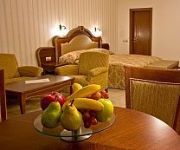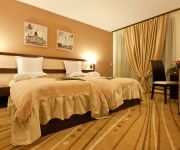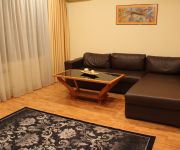Facts and Data
Webpages:
Official Unesco Page
Basis Data:
Unesco World heritage since: 1979
Size of heritage: 0.68 ha
- Buffer zone: 14 ha
Coordinates:
Longitude: 23,267°
Latitude: 42,650°
Summary
Located on the outskirts of Sofia, Boyana Church consists of three buildings. The eastern church was built in the 10th century, then enlarged at the beginning of the 13th century by Sebastocrator Kaloyan, who ordered a second two storey building to be erected next to it. The frescoes in this second church, painted in 1259, make it one of the most important collections of medieval paintings. The ensemble is completed by a third church, built at the beginning of the 19th century. This site is one of the most complete and perfectly preserved monuments of east European medieval art.
Location on Map
Show bigger map on Openstreetmap
Boyana Church: A Jewel of Bulgarian History
The Boyana Church, located in the Boyana district of Sofia, Bulgaria, is a UNESCO World Heritage site renowned for its exceptional medieval frescoes. This architectural masterpiece is a testament to the rich cultural heritage of Bulgaria and attracts visitors from all over the world.
History
The Boyana Church has a fascinating history that dates back to the 10th century. The original church was a small, one-nave building constructed during the Byzantine Empire. However, it was during the 13th century that the church underwent significant expansion and renovation under the patronage of the Bulgarian noble, Sebastocrator Kaloyan and his wife Desislava.
The most remarkable addition to the church was the construction of the second-floor chapel, known as the Boyana Church II. This chapel is adorned with exquisite frescoes that were painted in three stages, spanning from the 13th to the 19th century. The frescoes depict biblical scenes, saints, and historical figures, showcasing the artistic mastery of the time.
Current State
Today, the Boyana Church stands as a well-preserved architectural gem, offering visitors a glimpse into Bulgaria's medieval past. The church complex consists of three parts: the original church, the Boyana Church II, and a modern building that serves as an entrance hall and visitor center.
The original church, Boyana Church I, is a small, rectangular structure with a simple exterior. Inside, visitors can admire the original frescoes that date back to the 11th century. These early frescoes, though faded, provide valuable insights into the artistic techniques and religious beliefs of the time.
The main attraction of the Boyana Church is undoubtedly the Boyana Church II. This two-story chapel is adorned with over 240 frescoes, which are considered some of the most important examples of medieval Bulgarian art. The frescoes are characterized by their vibrant colors, intricate details, and expressive depictions of religious figures.
To preserve the fragile frescoes, the number of visitors allowed inside the Boyana Church II is limited, and photography is prohibited. However, the adjacent visitor center provides detailed information about the frescoes and their historical significance.
Recognizing the cultural significance of the Boyana Church, it was inscribed as a UNESCO World Heritage site in 1979. This designation has helped raise awareness about the importance of preserving this unique cultural treasure.
Conclusion
The Boyana Church is a testament to Bulgaria's rich history and artistic heritage. Its exceptional frescoes, spanning several centuries, provide a window into the country's medieval past. As a UNESCO World Heritage site, the Boyana Church continues to captivate visitors with its beauty and historical significance, ensuring that future generations can appreciate and learn from this remarkable cultural treasure.
Hotels and places to stay
Berlin Park Vitosha SPA
Earth and People
Festa Sofia
6aTo
Geneva
Gloria Palace Diplomat
ANASTASIA BOUTIQUE APARTHOTEL SOFIA
Parkhotel Amfora
SOFIA ODADJIYSKI HOTEL
GORNA BANYA HOTEL SOFIA
Videos from the area
Videos provided by Youtube are under the copyright of their owners.















